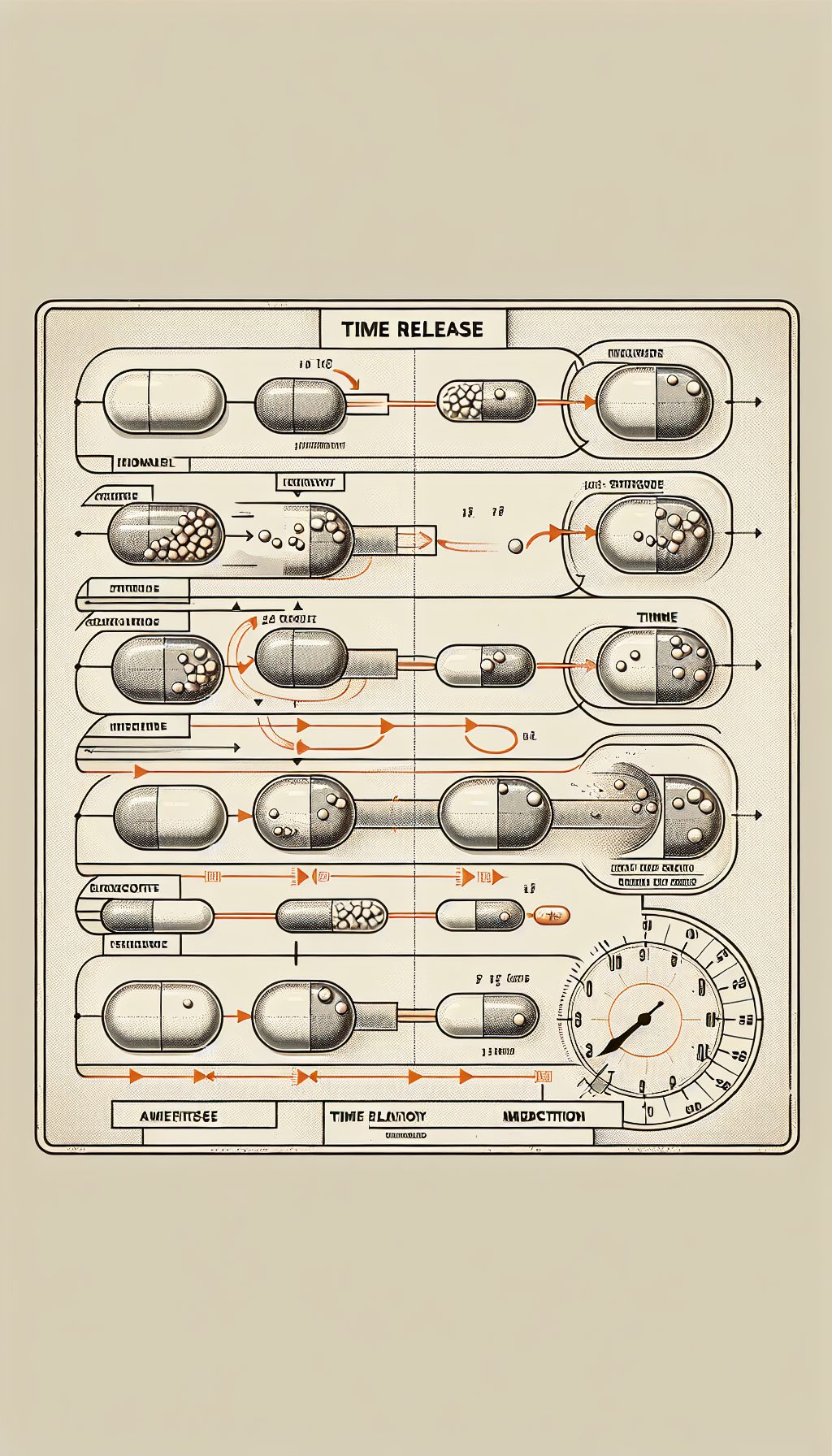In a world where precision medicine and personalized healthcare are becoming ever more crucial, time-release medications stand out as a beacon of innovation and convenience. These medications, designed to dissolve slowly and release therapeutic agents gradually, have transformed how patients manage chronic conditions and maintain optimal health. This article delves into the myriad benefits of time-release medications, exploring how they bolster treatment regimens, enhance patient adherence, and contribute to better health outcomes.
Understanding Time-Release Medications
Time-release, also known as extended-release, sustained-release, or controlled-release, refers to a method of drug delivery that allows a gradual release of medication into the bloodstream over an extended period. This contrasts with immediate-release medications, which release their active ingredients promptly upon administration.
The technology behind time-release formulations involves coating the active drug with materials that dissolve slowly or designing a pill matrix that allows the medication to seep out slowly. These methods ensure that the drug maintains therapeutic levels in the bloodstream for longer durations, thereby reducing the frequency of dosing.
Advantages of Time-Release Formulations
The primary advantage of time-release medications is the consistent delivery of the drug. This steadiness can help maintain the desired therapeutic effect without the peaks and troughs associated with multiple doses of immediate-release medications. For conditions like cardiovascular diseases, maintaining consistent drug levels is crucial, as it can prevent complications and improve outcomes. For more information on managing cardiovascular health, visit Avix Health’s resource on cardiovascular health.
Improved Adherence
One of the most significant challenges in medication management is ensuring patients adhere to their prescribed treatment regimens. Time-release medications offer a solution by reducing the number of doses needed per day, thus simplifying the regimen. This convenience can significantly improve adherence, as patients are more likely to take their medication if the process is less intrusive on their daily lives.
Reduced Side Effects
Another benefit is the potential reduction in side effects. By preventing the high concentrations of medication that can occur with immediate-release formulations, time-release medications can minimize the risk of adverse effects. This is particularly beneficial for medications with a narrow therapeutic index, where slight increases in dose can lead to toxicity.
Enhanced Efficacy
Time-release medications can also enhance the efficacy of treatment. For instance, certain drugs are more effective when they are available in the bloodstream at a constant level, especially those used in managing chronic conditions such as diabetes. The consistent drug levels achieved with time-release formulations can help control blood sugar levels more effectively than traditional medications. For insights on the role of medication in managing diabetes, explore Avix Health’s dedicated article.
Convenience and Quality of Life
From a lifestyle perspective, time-release medications can improve the quality of life for patients. Those who require multiple doses throughout the day, particularly the elderly or those with memory impairments, may find time-release options more manageable. This convenience can lead to a more active and less medically encumbered lifestyle.
Specialized Treatment Applications
Time-release technologies also open the door to more specialized treatment applications. For instance, they can be designed to target medication to specific parts of the gastrointestinal tract, which can be particularly beneficial for treatments involving the stomach, intestines, or colon.
Considerations and Limitations
While time-release medications offer numerous benefits, they may not be suitable for all drugs or conditions. Immediate-release medications might be more appropriate in situations requiring rapid onset of action, such as pain relief. Additionally, time-release formulations can be more complex and expensive to produce, potentially impacting their availability and cost.
Implementing Time-Release Medications in Treatment Plans
Incorporating time-release medications into treatment plans should be a collaborative process between healthcare providers and patients. Providers must consider the individual’s specific needs, the characteristics of the medication, and the condition being treated.
Patients should be educated about the differences between time-release and immediate-release medications, including the importance of adhering to the prescribed regimen and not crushing or splitting the pills, as this could disrupt the time-release mechanism.
The Future of Time-Release Medications
The development of time-release medications is an area ripe with potential, particularly with advances in materials science and biotechnology. Future innovations may lead to more personalized time-release systems, adjustable release rates, and even smart pills that can respond to physiological cues.
For a deeper look into how digital technology is impacting medication management, including the use of time-release medications, readers can visit The Impact of Digital Health on Medication Management.
External High-Quality Resources
To enhance the understanding of time-release medications and their applications, several niche resources offer valuable insights:
- The American Society of Clinical Pharmacology and Therapeutics provides a wealth of information on the clinical implications of time-release drug formulations.
- The Controlled Release Society is a hub for professionals and researchers focusing on the science and technology of controlled release.
- Pharmacy Times offers articles and resources on the latest trends in pharmacy practice, including the use of time-release medications.
Conclusion
Time-release medications represent a significant leap forward in drug delivery systems. By providing consistent levels of medication over time, these formulations can improve adherence, reduce side effects, and ultimately lead to better health outcomes. As healthcare continues to move towards more patient-centered approaches, time-release medications will undoubtedly play an increasingly vital role in treatment strategies.
The integration of such innovative therapies into patient care requires a thorough understanding of both the benefits and the considerations, ensuring that each individual receives the optimal treatment for their unique healthcare needs.



